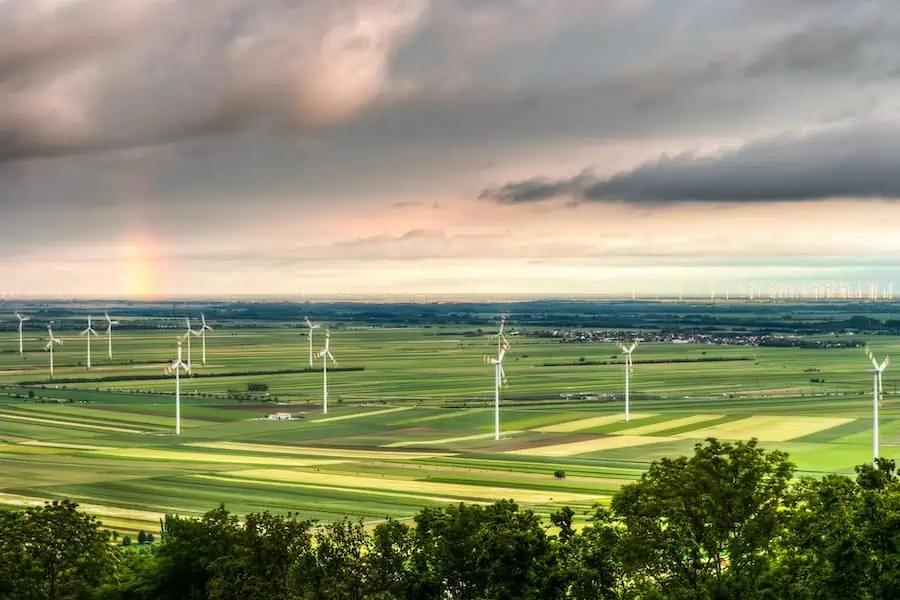As consumers become more environmentally conscious, there has been a growing interest in green tariffs and switching to renewable energy sources. Green tariffs are a way for households and businesses to support renewable energy production by paying a premium for their electricity. The cost of green energy tariffs is typically higher than the cost of traditional electricity, but many people are willing to pay more to reduce their carbon footprint.
In this blog post, we will provide a comprehensive guide to green tariffs and everything you need to know about switching to renewable energy. So, let’s get started!
Exploring Renewable Energy Options
For individuals and businesses looking to reduce their environmental impact, exploring renewable energy options is a crucial step toward achieving sustainability goals. Renewable energy includes sources such as solar, wind, hydro, and geothermal power, which generate electricity without depleting finite resources or emitting harmful greenhouse gases. Switching to renewable energy can help reduce carbon footprints and contribute towards a cleaner, more sustainable future. However, it is essential to research and understand the various renewable energy options available before making the switch.
Advantages Of Green Tariffs
Green tariffs are a powerful tool in the fight against climate change, offering numerous advantages over traditional fossil fuel-based energy sources. One of the most significant benefits of green tariffs is their ability to help reduce greenhouse gas emissions. By sourcing energy from renewable sources, such as wind and solar power, consumers can significantly reduce their carbon footprint and contribute to a cleaner, more sustainable future.
Additionally, green tariffs offer a cost-effective alternative to traditional utility companies, with many providers offering competitive rates and flexible payment options. Furthermore, choosing a green tariff can help to support the growth and development of the renewable energy sector, creating new jobs and driving innovation in clean energy technologies.
Comparing Different Green Tariffs
When it comes to switching to renewable energy, one of the first considerations is often choosing a green tariff from a utility provider. However, with so many options available, it can be overwhelming to compare and select the right tariff for your needs.
To simplify the process, it’s important to understand the key differences between different green tariffs. Three key factors to consider are the source of renewable energy, the level of certification or verification, and the price. By comparing these factors, consumers can make an informed decision and select a green tariff that aligns with their values and budget.
Understanding Tariff Pricing Structures
One of the key components to understanding green tariffs is tariff pricing structures. Tariffs are the rates and charges that affect the cost of energy. The pricing structures for green tariffs vary, with some offering a fixed price for the entire contract term and others offering a variable rate that changes with market conditions. It is important to carefully review the pricing structures of different green tariffs to ensure that they align with your energy needs and budget.
Some tariffs may also offer incentives or discounts for using renewable energy sources or for reducing energy consumption during certain times of the day. Understanding the pricing structures of green tariffs is critical to making an informed decision about switching to renewable energy.
How To Switch To Green Tariffs
Switching to green tariffs can be an effective way to reduce your carbon footprint and support the transition to renewable energy sources. Green tariffs are energy plans that provide electricity generated from renewable sources such as wind, solar, hydro, and biomass. The process of switching to green tariffs is simple, and it can be done in a few easy steps.
Firstly, you need to find a green tariff provider that offers renewable energy plans in your area. Secondly, compare the costs and benefits of different green tariffs to find the one that best suits your needs. Thirdly, contact your chosen provider and provide them with the relevant information, such as your current energy supplier and meter readings. Finally, sit back and enjoy the benefits of using renewable energy while reducing your carbon footprint. Switching to green tariffs is a simple yet effective way to contribute to a more sustainable future for our planet.
Potential Cost Savings With Green Tariffs
Many energy providers offer green tariffs at comparable or even lower rates than traditional fossil fuel-based energy plans. This is due to a number of factors, including the decreasing cost of renewable energy technology and the growing demand for sustainable energy options. Additionally, some green tariffs may come with incentives such as tax credits or rebates, further reducing the overall cost of switching to renewable energy.
It’s important to note that the cost savings will vary depending on your location, energy usage, and specific tariff options available in your area. However, in many cases, the potential cost savings make switching to green tariffs a smart financial decision in addition to being an environmentally responsible choice.
The Impact Of Green Tariffs
One important aspect of switching to renewable energy that has gained attention in recent years is the implementation of green tariffs. Green tariffs are a financial mechanism that allows businesses, organizations, and households to purchase renewable energy directly from a utility or a third-party provider. These tariffs are a way to incentivize the growth of renewable energy sources by creating a market for them. This means that businesses and individuals who want to reduce their carbon footprint and support renewable energy can do so by paying a premium to ensure that their energy use is sourced from green energy providers.
The impact of green tariffs can be significant, as they provide a financial incentive for utility companies to invest in renewable energy projects and expand their infrastructure. This, in turn, can accelerate the transition to a low-carbon economy, which is crucial for mitigating the impacts of climate change.
Making A Positive Environmental Impact
One of the most significant benefits of switching to renewable energy through green tariffs is the positive environmental impact it creates. By choosing to support renewable energy, individuals and businesses can contribute to reducing the harmful effects of greenhouse gas emissions on the planet. Renewable energy sources, such as wind and solar power, do not produce carbon dioxide and other pollutants that contribute to climate change. Instead, they provide a clean, sustainable energy source that helps to reduce our reliance on fossil fuels.
By supporting green tariffs, individuals and businesses can play a vital role in reducing carbon emissions and mitigating the effects of climate change, making a positive impact on the environment for future generations.
Conclusion
Transitioning to green tariffs and renewable energy can be a beneficial step for both the environment and your finances. By choosing a renewable energy supplier, you can reduce your carbon footprint and support the growth of the renewable energy industry. It’s important to do your research and make an informed decision when switching to a green tariff. With the right information and guidance, you can make a positive impact on the planet and promote sustainable energy practices.








